APHG finals, models/theorys (all units) pt.3
5.0(1)
5.0(1)
Card Sorting
1/20
There's no tags or description
Looks like no tags are added yet.
Study Analytics
Name | Mastery | Learn | Test | Matching | Spaced | Call with Kai |
|---|
No study sessions yet.
21 Terms
1
New cards
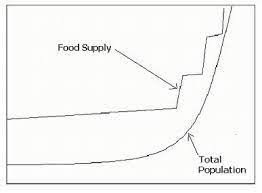
who is the creator of this model/theory? what did they claim?
Esther Boserup
The rate of food supply may vary but never reaches its carry capacity because as it approaches the threshold, an invention, or development increase food supply
The rate of food supply may vary but never reaches its carry capacity because as it approaches the threshold, an invention, or development increase food supply
2
New cards
What did Karl Marx conclude?
Capitalism promotes class struggle and an unequal distribution of wealth (and food);
socialism promotes the equal distribution of power and wealth (and food)
socialism promotes the equal distribution of power and wealth (and food)
3
New cards
What is the law of intervening opportunities? who created it?
Samuel Stouffer.
The # of people going to a given distance is directly proportional to the # of opportunities at that distance and inversely proportional to the # of intervening opportunities
The # of people going to a given distance is directly proportional to the # of opportunities at that distance and inversely proportional to the # of intervening opportunities
4
New cards
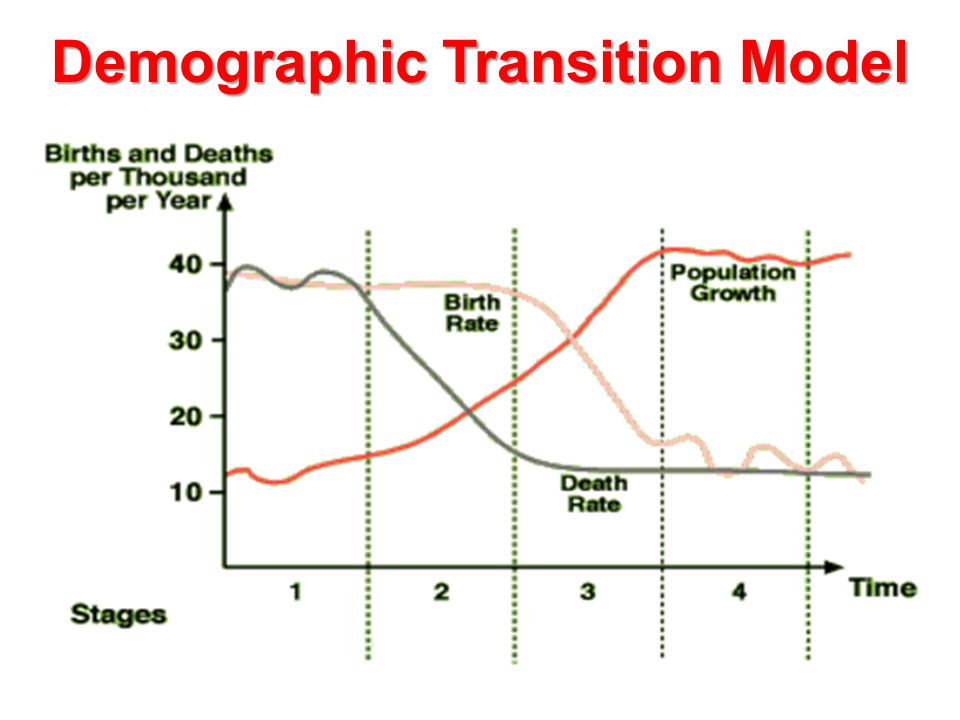
What are the demographic transition model (DTM) stages and who created it?
Stage 1: \*Low growth \\n High but fluctuating CDR and CBR. Low NIR. Population composition is youth dependency
Stage 2: \*high growth \\n CBR remains high. CDR plummets due to improved nutrient, sanitation, and medication. NIR rapidly grows. Population composition on youth. \\n \*MDS enters industrial revolution and 150 yrs later LDCs enter Medical revolution \\n
Stage 3: \*moderate growth \\ CBR falling, CDR falling slowly, NIR increase slows, population composition, mostly youth-people surviving longer \\
Stage 4: \* low growth \\ CBR low, CDR low, NIR falls and stays at low growth, population composition, shifts to elderly \\ \*women education-less babies
possible stage 5: Zero population growth, population composition:eldery. Japan, Germany, Russia
Warren Thomposon
Stage 2: \*high growth \\n CBR remains high. CDR plummets due to improved nutrient, sanitation, and medication. NIR rapidly grows. Population composition on youth. \\n \*MDS enters industrial revolution and 150 yrs later LDCs enter Medical revolution \\n
Stage 3: \*moderate growth \\ CBR falling, CDR falling slowly, NIR increase slows, population composition, mostly youth-people surviving longer \\
Stage 4: \* low growth \\ CBR low, CDR low, NIR falls and stays at low growth, population composition, shifts to elderly \\ \*women education-less babies
possible stage 5: Zero population growth, population composition:eldery. Japan, Germany, Russia
Warren Thomposon
5
New cards
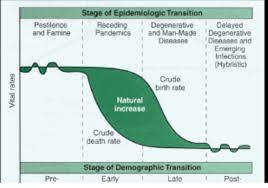
Who created the Epidemiological transition model? what re the stages?
stage 1: infectious diseases (cholera, tuberculosis), pandemics/epidemics, animal attacks and accidents, malnutrition
stage 2: receding pandemics due to medical advancements, etc. (industrial revolution)
stage 3: degenerative and human-made diseases (cancer, aging lifestyle choices, heart diseases)
stage 4: delayed degenerative diseases (medical advancements, Alzheimer’s)
Stage 5: reemergence of infectious diseases. (covid, ebola)
stage 2: receding pandemics due to medical advancements, etc. (industrial revolution)
stage 3: degenerative and human-made diseases (cancer, aging lifestyle choices, heart diseases)
stage 4: delayed degenerative diseases (medical advancements, Alzheimer’s)
Stage 5: reemergence of infectious diseases. (covid, ebola)
6
New cards

what is the Bid rent curve? who created it?
William Alonso
The price and demand for real estate changes (usually decrease) as the distance from the CBD increases, different users will compete for different parcels of limited land in order to maximize profits
The price and demand for real estate changes (usually decrease) as the distance from the CBD increases, different users will compete for different parcels of limited land in order to maximize profits
7
New cards
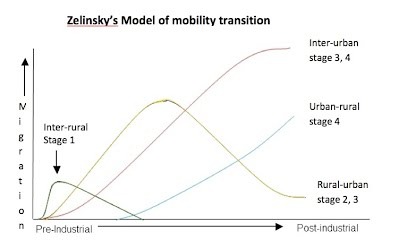
what are the stages of the Zelinsky/mobility transition model
1. Premodeern traditional society (before the onset of large-scale urbanization, and there is very little migration) RNI=0
2. Early Transitional society (Massive movement from countryside to cities as a community experiences the process of modernization) RNI=high
3. Late Transtional soceity (urban→urban migration surpasses rural→urban migration) RNI=moderate
4. Advanced society (rural→ urban movement is further reduced and vigorous movement of migrants from city to city and within individual urban agglomeration occurs) RNI=sligt or near 0
5. Future advanced society (all migration may be interurban or intraurban) RNI=negative to 0
8
New cards
What is Fredrich Ratzels theory?
to survive a state requires nourishment to gain political power (territory)
organic geopolitics and more specifically, lebensraum (living space) and social Darwinism (survival of the fittest)
organic geopolitics and more specifically, lebensraum (living space) and social Darwinism (survival of the fittest)
9
New cards
What is the heartland theory and who created it?
Halford Mackinder. Stress over sea power
1. He who rules inland Europe (heartland) rules eastern Europe
2. He who rules inland Europe (Heartland) rules Europe, Asia, and Africa ( World Island)
3. He who rules Europe, Asia, and Africa (World Island) rules the world (world domination)
1. Nazi Germany embraced
1. He who rules inland Europe (heartland) rules eastern Europe
2. He who rules inland Europe (Heartland) rules Europe, Asia, and Africa ( World Island)
3. He who rules Europe, Asia, and Africa (World Island) rules the world (world domination)
1. Nazi Germany embraced
10
New cards
What is the rimland theory? who created it?
* Nickouls Spyknam stressed that alliances will keep land power in check
* The rimland (the coasts) that is the foremost of power
* Whoever controls the rimland would eventually control the world island. Whoever control the world island would soon control the world.
* Control the coast, control the world
* The rimland (the coasts) that is the foremost of power
* Whoever controls the rimland would eventually control the world island. Whoever control the world island would soon control the world.
* Control the coast, control the world
11
New cards
what is the domino theory?
* Like a set of dominos, if one fell so would the others
* Idea that the political establishment and one country can lead to the collapse of political stability and neighboring countries sitting a chain reaction of collapse
* Reason US went to war on Vietnam (Vietnams collapsing)
* Idea that the political establishment and one country can lead to the collapse of political stability and neighboring countries sitting a chain reaction of collapse
* Reason US went to war on Vietnam (Vietnams collapsing)
12
New cards
what is the Kurgan hypothesis? who created it?
Marija Gimbutas
The diffusion of the Indo-European language through military conquest and migration done through Kurgans (nomadic warriors on horses)
The diffusion of the Indo-European language through military conquest and migration done through Kurgans (nomadic warriors on horses)
13
New cards
what is the Anatolian farmer theory? who created it?
Colin Renfrew
The adaptation of the Indo-European language was facilitated through successful agricultural practices
surplus food→population increased→people migrated out of hearth through Europe and Asian continents
The adaptation of the Indo-European language was facilitated through successful agricultural practices
surplus food→population increased→people migrated out of hearth through Europe and Asian continents
14
New cards
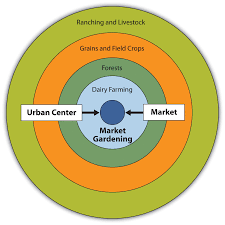
What assumptions did Von Thunen create while making this model?
1. The land is an isotropic flat plain (with no slope or gradient)
2. Has no rivers or mountains (barriers(
3. farmers transport their own goods to market via oxcart, across land, directly to the central city (no roads)
4. soil quality and climate or consistent
5. farmers behave rationally to maximize profits
15
New cards
Who is Norman Borlaug and what did he do?
Father of the green revolution
researcher that traveled to Mexico to improve Agriculture and biotechnology techniques in order to feed the growing population of the world
* won the Nobel prize for dwarf wheat
researcher that traveled to Mexico to improve Agriculture and biotechnology techniques in order to feed the growing population of the world
* won the Nobel prize for dwarf wheat
16
New cards
What are the steps to the development of edge cities? who created it?
Joel Garreau
An edge cities population increases in the day time and decreases at night
steps:
1. Suburbanization
2. Malling
3. Edge cites
An edge cities population increases in the day time and decreases at night
steps:
1. Suburbanization
2. Malling
3. Edge cites
17
New cards
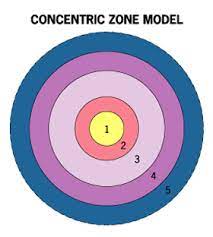
What are the zones to the concentric zone model? who created it? What does the model apply to cites?
Burgess. City grows outward from central area in a series of rings
1. CBD
2. Zone of transition
3. Zone of independent workers homes
4. zone of better residences
5. commuters zones
1. CBD
2. Zone of transition
3. Zone of independent workers homes
4. zone of better residences
5. commuters zones
18
New cards

What are the zones to the sector model? who created it? What does the model apply to cites?
Hoyt. city grows in wedges or corridors, extended out from CBD
1. CBD
2. transportation and industry
3. low class residential
4. middle class residential
5. high class residential
1. CBD
2. transportation and industry
3. low class residential
4. middle class residential
5. high class residential
19
New cards
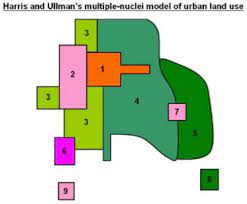
What are the zones to the multiple nuclei model? who created it? What does the model apply to cites?
Harris and Ullman. A city consist of a collection of individual nodes or centers which different types of people and activities cluster
1. CBD
2. wholesale, light manufacturing
3. low class residential
4. middle class residential
5. high class residential
6. heavy manufacturing
7. outlying business district
8. residential suburb
9. industrial suburb
1. CBD
2. wholesale, light manufacturing
3. low class residential
4. middle class residential
5. high class residential
6. heavy manufacturing
7. outlying business district
8. residential suburb
9. industrial suburb
20
New cards
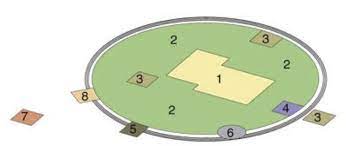
What are the zones to the Galactic city/ Peripheral model? who created it? What does the model apply to city?
Harris. An urban area consists of an inner city surrounded by large suburban residential businesses areas tied together by a beltway or ring road
1. Central city
2. suburban residential area
3. shopping mall
4. industrial district
5. office park
6. service center
7. airport complex
8. combined employment and shopping center
1. Central city
2. suburban residential area
3. shopping mall
4. industrial district
5. office park
6. service center
7. airport complex
8. combined employment and shopping center
21
New cards